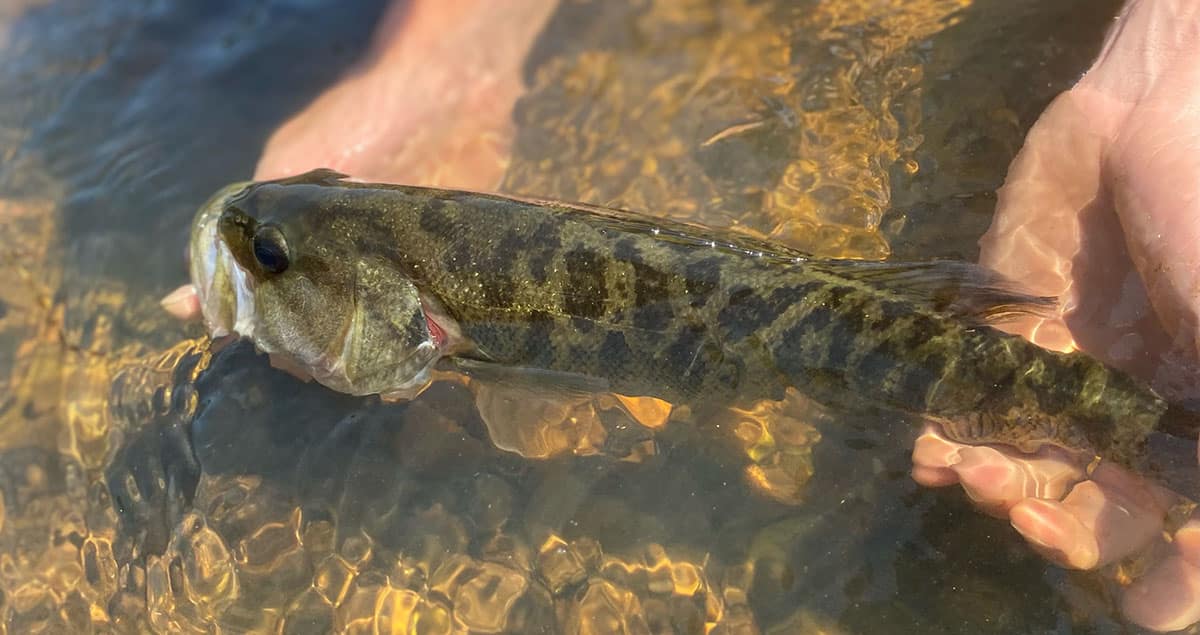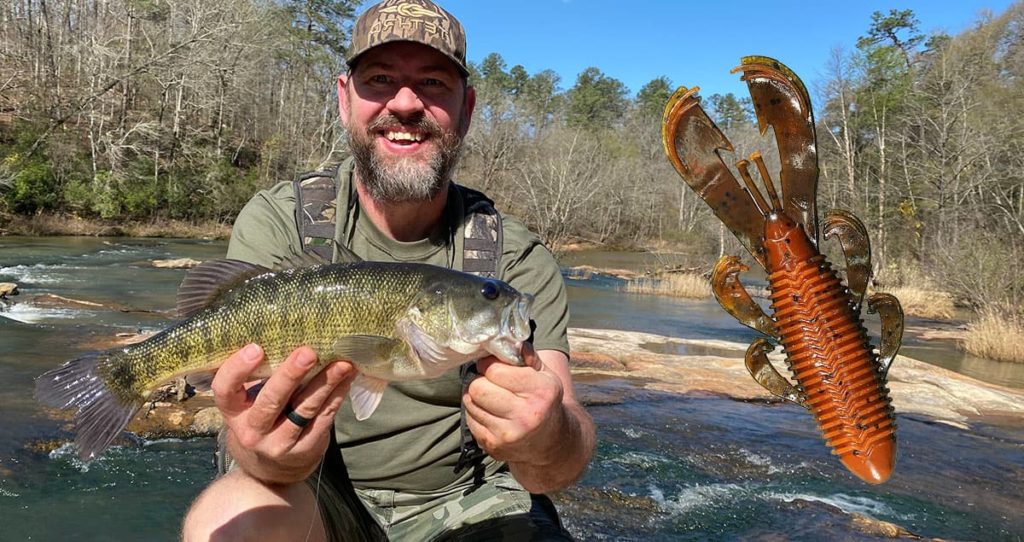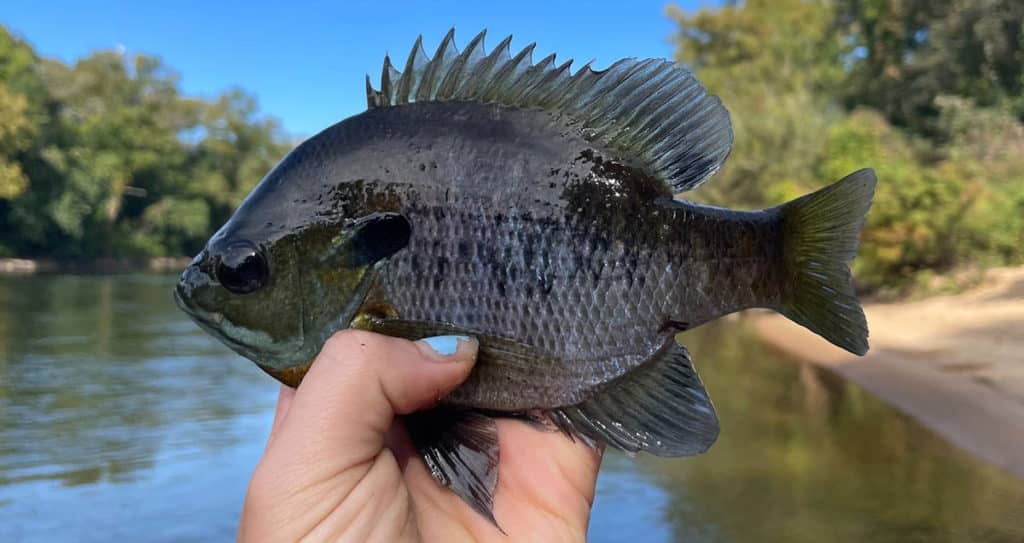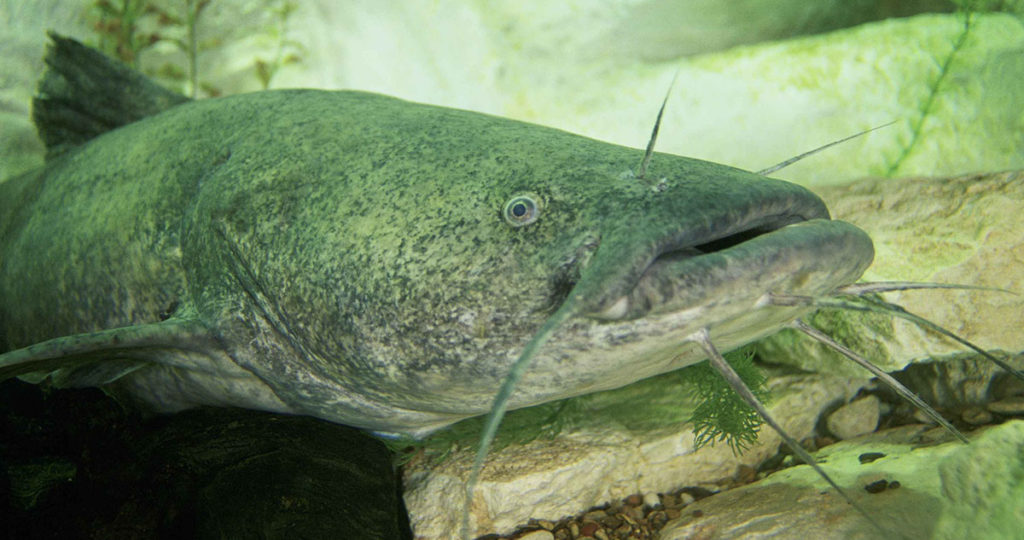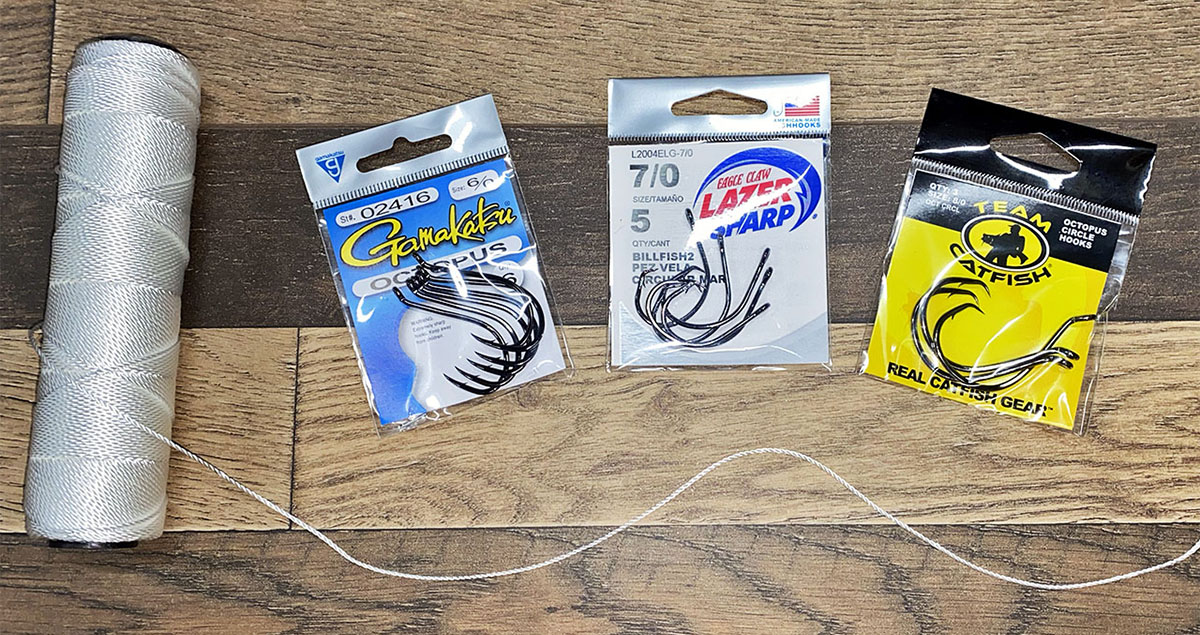Shoal Bass (Micropterus cataractae) are a lesser-known bass species to many anglers and fish enthusiasts. Those who are aware of them and live in an area where they exist rave about the pursuit of, the fight and the unique look Shoal bass provide.
Throughout this article we will learn more about shoal bass, their habitat, their eating habits and how they compare to other bass species.
About Shoal Bass
Shoal bass are often confused for redeye bass due to the slight red tint in their eyes. However, they are actually more similar to another member of the Black bass family: the spotted bass.
Shoal bass received their name mainly as a result of the habitat they live in. A shoal is what many anglers refer to as a sand, gravel or rocky bar within the body of water. Shoal bass spend the majority of their time cruising over those shoals and through riffles in search of food.
Shoal bass are not one of the larger bass species as the average length falls somewhere between 12-14 inches. The largest Shoal bass can reach up to 24 inches at their maximum and a few have weighed over 8 pounds.
Where to find Shoal Bass?
Shoal bass have a very limited habitat and are truly only found in a few areas throughout the Southeastern United States. Georgia, Alabama, and Florida are the only states where Shoal bass are consistently found, specifically in the Apalachicola, Chipola, and Flint River systems. They do not do well in reservoirs.
Ideally, shoal bass look for flat, shallow areas of rocks (specifically limestone) in the middle of streams or rivers to spend their time and feed. If these rocky shoals are not available, shoal bass will spend their time in shallower, moderately slow moving water in search of food that is being carried downstream by the current.
What do Shoal Bass Eat?
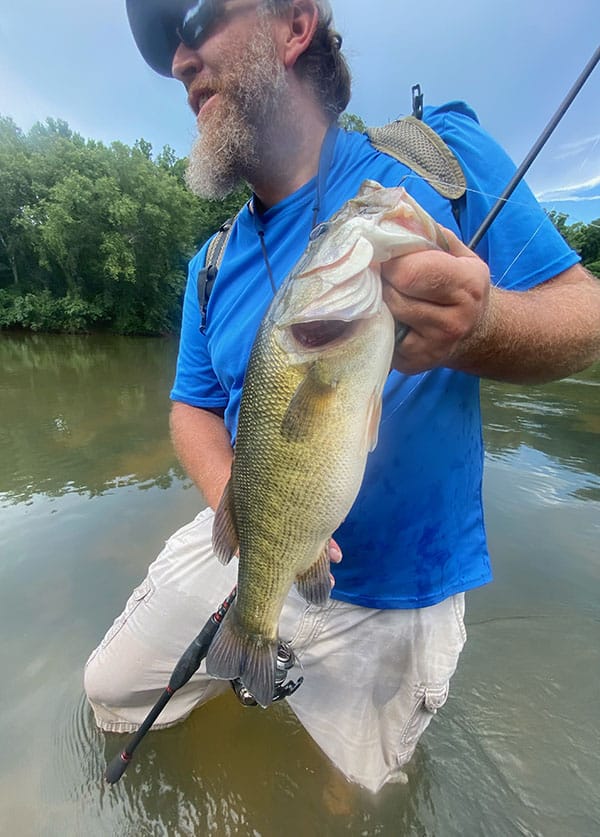
In terms of diet, Shoal bass are not that different from other members of the bass family. Their diet consists of mainly topwater aquatic insects, nymphs, crayfish and small fish when the other three options aren’t as prevalent. In the rivers and streams where shoal bass live, there are multiple different terrestrials and nymphs Shoal bass will eat.
The main types they focus on are may and caddisflies, but in the areas in which they live midges (mosquito and gnats) are also a common option. Shoal bass will also eat nymphs, which in simple terms are insects that are not fully developed yet and live lower in the water column.
In the Georgia, Florida and Alabama rivers in which shoal bass live, the most common nymphs are caddis and mayfly nymphs. In certain times of the year, dragonfly nymphs are common and Shoal bass will not hesitate to make a meal out of them when given the opportunity.
Another food source for the shoal bass is small fish and sculpins. While fish are not the first choice for shoal bass, they are opportunistic feeders and will eat fish when the opportunity for a simple meal presents itself.
This often happens in the low light hours around sunrise and sunset when shoal bass cruise the shallows in search of food. They are great at using the shadows and obstructions in the water to catch unsuspecting prey and oftentimes minnows and small fish are the unsuspecting food source hanging out in these areas.
Shoal Bass vs Smallmouth Bass
In certain areas, Shoal bass can be mistaken for smallmouth bass. A lot of the confusion has to do with their size and coloration. Shoal bass, like smallmouth bass, both have a slightly smaller average size, usually in the 12-14 inch range, and can have a similar bronze tint to them.
Both shoal and smallmouth bass have dark, vertical lines on their bodies. The shoal bass’s lines are usually more pronounced, but certain smallies will also have dark vertical lines. In situations like these, the easiest way to distinguish between the 2 is to look at the base of the tail. Shoal bass typically have a dark spot or marking right at the base of the tail where the smallmouth bass will not.
Another differentiation between shoal Bass and smallmouth bass is where they live. While shoal bass live almost exclusively in rivers and moving water, smallmouth bass will live in both stagnant and moving water.
In these rivers and streams, shoal bass will spend as much time as they can in a moderate current, normally over shallow, rocky areas looking for food. On the other hand, smallmouth bass spend a lot of their time in the fast moving current hiding behind rocks and logs waiting for an easy meal to be carried past.
In terms of diet, shoal Bass and smallmouth Bass are actually pretty similar. Shoal bass will spend the majority of their time feeding on aquatic insects and terrestrials while smallmouth bass will do the same, but are slightly more aggressive. smallmouth show this added aggression by chasing and eating minnows and small fish with more regularity than shoal bass do. Shoal bass will eat minnows and small fish, but with less frequency than their smallmouth cousins.
Besides agreeing on insects, both shoal and smallmouth bass love to eat crayfish. Crayfish are extremely prevalent in rivers and streams and usually make their homes in the rocky areas both shoal and smallmouth love. Where crayfish are present, both smallies and shoals are not far behind which is why there is frequent confusion between the two species.
Shoal Bass vs Largemouth Bass
Shoal bass and largemouth bass are often mistaken for one another, though not as frequently as Shoal and Smallies are. The main reason a shoal will be mistaken for a largemouth is due to a similar body shape.
When both fish are young and not fully developed, they do resemble one another quite closely. As they age, the distinct features of each become more prominent and the mixups are less common.
When faced with a situation of identifying whether or not your catch is a shoal or largemouth bass there are a few things to look for. The first is the jawline. A largemouth bass has a jawline that extends well past the eyeball where a shoal bass has a jaw that stops just underneath the eye. Another distinguishing factor is the striping on each.
The Shoal bass, as we’ve discussed prior, have vertical stripes that mimic tiger stripes, where largemouth bass have a single dark line running horizontally from their mouth to their tail.
Another difference between these two species is their habitat. Largemouth bass typically find the deeper, cooler parts of the rivers and streams where the shoalies spend most of their time in the shallow, fast moving water.
In addition to habitat, the diets of both of these fish are slightly different as well. Largemouth bass feed a bit more on larger prey like minnows, fish and frogs where the shoal bass prefer aquatic insects as their top choice. There is some overlap as both of these species will feed on crayfish, but typically the largemouth bass are focused on bigger prey and shoal bass stick with smaller.

